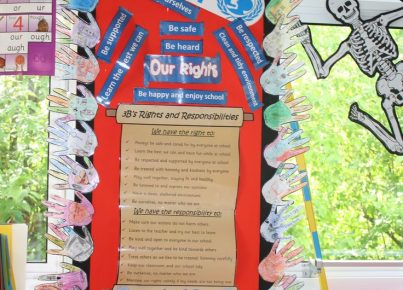Introduction
In today’s fast-paced and competitive education landscape, educators are constantly on the lookout for ways to improve students’ mental well-being. One increasingly popular method is mindfulness—a practice that involves focusing one’s attention on the present moment while accepting an open and nonjudgmental attitude toward one’s thoughts and feelings. This article explores the benefits of incorporating a free mindfulness journal into your secondary classroom, providing students with a powerful tool to enhance emotional regulation, manage stress, and promote a sense of calm.
The Importance of Mindfulness in the Classroom
Research has shown that practicing mindfulness offers numerous benefits for students at all grade levels. Some of the key benefits include:
1. Increased emotional regulation – Mindfulness practices can help students become more aware of their emotions, allowing them to better understand and manage them when challenges arise.
2. Reduced stress – By focusing on the present moment, mindfulness allows students to shift their thoughts away from past or future worries, leading to a reduction in stress and anxiety.
3. Improved academic performance – Several studies have found a positive correlation between mindfulness practices and academic achievement, with mindful students displaying enhanced focus, concentration, and memory.
4. Enhanced social-emotional learning – Mindfulness encourages self-awareness, empathy, and compassion, which are crucial skills for positive interaction with others.
Introducing a Free Mindfulness Journal
A free mindfulness journal is an invaluable tool for bringing calm to your secondary classroom. Incorporating journaling into your daily or weekly routine can encourage students to internalize their mindfulness practice and reflect on their experiences. To get started:
1. Download or create a free mindfulness journal template – Many templates are available online that focus on gratitude, self-reflection prompts or simply provide space for free expression.
2. Set aside dedicated time each week or day for journaling – Establish a regular schedule for students to integrate journaling into their routine.
3. Encourage students to write without judgment – Emphasize that there is no right or wrong way to journal. The goal is self-expression and the exploration of thoughts and feelings openly.
4. Create a safe and comfortable environment – Students may be hesitant to share personal information from their journals. Make it clear that the journal is for personal use only, and respect each student’s privacy.
5. Incorporate mindfulness exercises – In addition to journaling, consider incorporating mindfulness exercises such as deep breathing, body scans, or guided meditation to enhance students’ mindfulness practice.
Conclusion
Integrating a free mindfulness journal into your secondary classroom can help cultivate a more supportive and emotionally healthy environment for your students. With its multitude of benefits, including enhanced emotional regulation, reduced stress, and improved academic performance, mindfulness can be an invaluable addition to any educator’s toolkit. By introducing this proactive approach to mental well-being, you have taken a vital step toward creating a more resilient and confident generation of learners.





